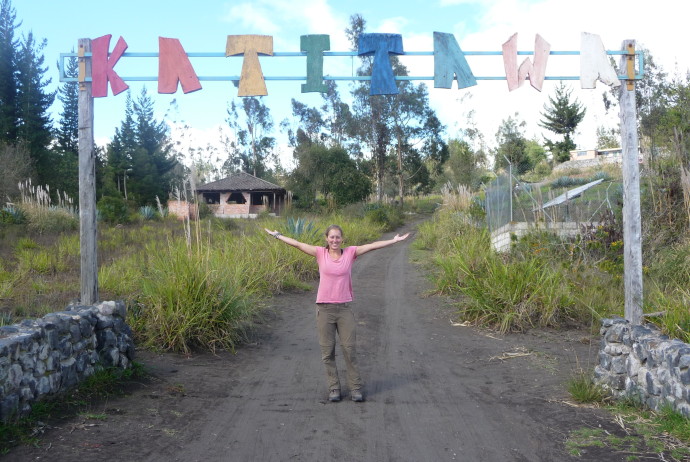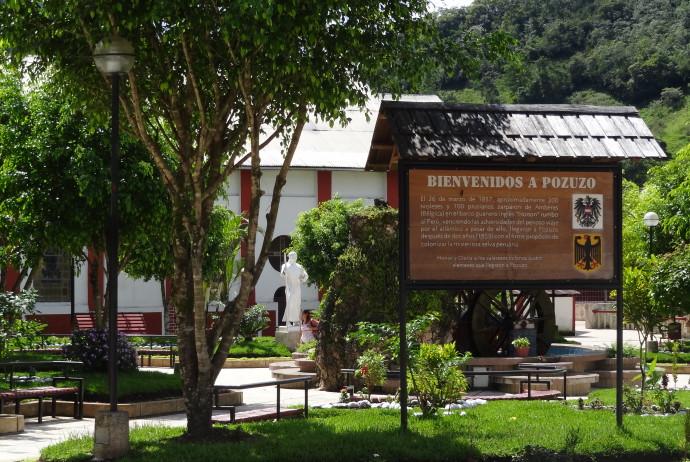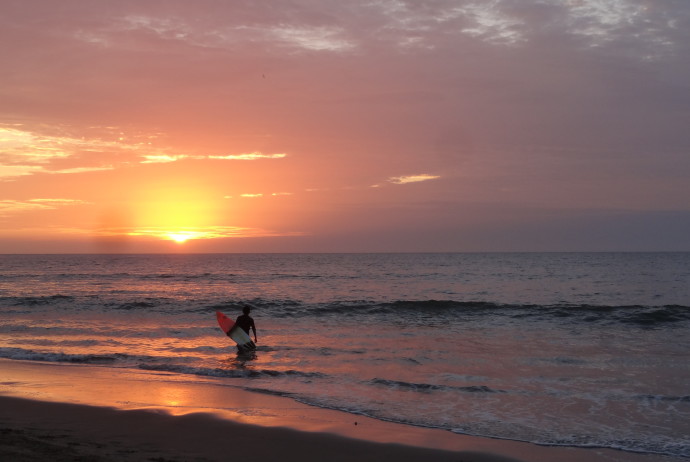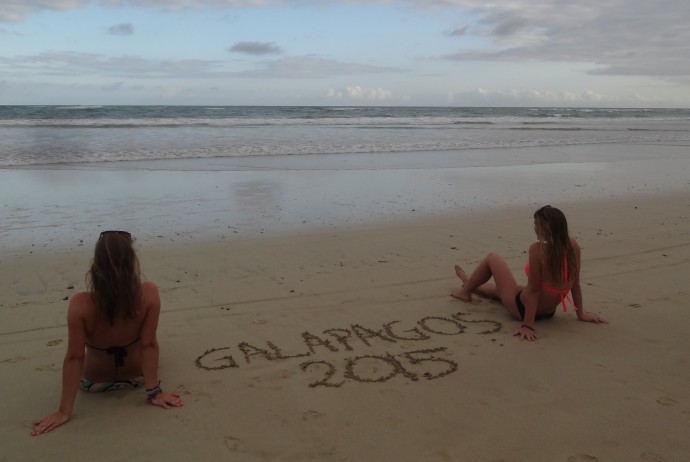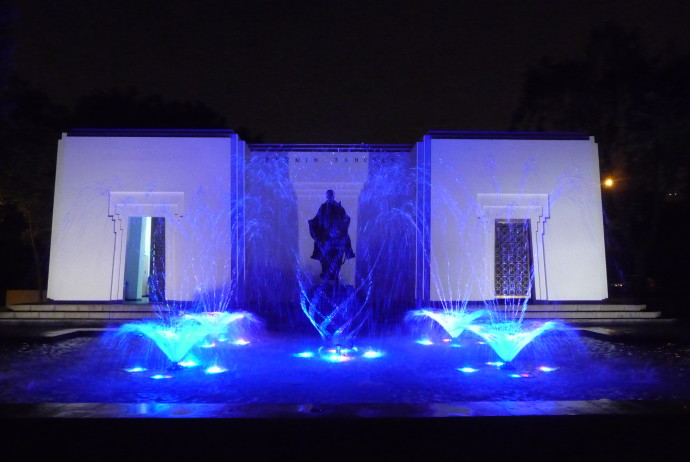Our stay in the “Sierra” – that is what Ecuadorians call this region of the central highlands – was definitely full of ups and downs, and not only scenery-wise! Our first destination here was Salasaka. The Lonely Planet on Ecuador describes Salasaka as “a rather ugly town which you will notice to have arrived at when all men around you seem to be wearing the same black ponchos”. This is actually a very adequate and authentic description. Therefore, Salasaka is not on most backpackers “top-places-to-visit” list. However, it had made it on ours because we had signed up to volunteer at Salasaka’s Katitawa school. The head coordinator of the volunteer program had given us detailed descriptions on how to get to the school’s volunteer house – and these descriptions already promised some adventurous times as we were told to not only change buses multiple times but also eventually jump on the back of a pick-up truck which should take us along for the last bit of our journey. Surprisingly enough, that all worked out smoothly and so we could sooner than expected move into the volunteer house that looked rather like a construction site*.
During our time as volunteers we helped out in the garden, in the kindergarten, in classes during the day for the school kids and in classes at night for grown-ups who wanted to improve their English or learn some German. All the kids and locals were very friendly and open to us, so we got a good glimpse of the local way of living. Also, lucky for us, our fellow volunteers were all not only lovely people, but also pretty amazing and passionate cooks who ensured that we were well fed every evening.
Despite Salasaka’s not exactly overwhelming charm and beauty, its surroundings have a lot to offer for weekend excursions. For instance, Baños, which is just a 40min bus ride away, is one of Ecuador’s Meccas for outdoor adrenaline sports lovers and all fans of great nightlife. You can go rafting, canyoning or puentening (the local sport of jumping off a bridge and swinging under it), afterwards party all night and then start all over. The central highlands are also great for hiking and mountaineering. Lots of people hike up one of Ecuador’s most active volcanoes, the Cotopaxi (5890m). As we had already done our share of high mountain climbing for a while, we did not do that but instead went to see the turquoise Quilotoa lagoon where there are lots of opportunities for more modest hiking and you may see Volcano Cotopaxi in the distance, if the weather is on your side.
In spite of all these perks and definitively some highs, we ended up cutting our stay in Salasaka short because it turned out that we where not able to make friends or at least cope with our “other” fellow roommates named bed bugs, fleas and spiders who were getting way too “touchy”. Nevertheless, it was an experience that we surely won’t ever forget.
When in the Central highlands
What to do: Go rafting or canyoning in Baños for some proper adrenaline rushes!
Where to stay: Hostal Cañalimeña in Baños. Clean and bedbugs free beds plus friendly staff, what else can you wish for?
What to eat and drink: Have a delicious breakfast prepared with lots of love and served with great coffee at Dulces detalles in Baños.
What to do after a stay in the volunteer house: Have all your belongings chemically washed and disinfected at the lavandaria Magic, located in Pelileo, the neighbouring town just 20 bus minutes from Salasaka.
* That is, of course, only according to our opinion
